How grind level affects flavor of coffee

Beyond the Grind: Unveiling the Flavor Secrets of Coffee Bean Fineness
As the world becomes increasingly obsessed with the pursuit of perfection in every aspect of our lives, from artisanal cheeses to bespoke tailoring, it is no surprise that coffee enthusiasts have turned their attention to the humblest of ingredients: the coffee bean. While many may dismiss the notion that the degree of grinding can impact the taste of a cup of coffee, connoisseurs will attest that this oft-overlooked aspect of coffee preparation holds the key to unlocking a world of flavors previously unknown.
In an effort to demystify the relationship between grind size and flavor profile, our team embarked on an exhaustive investigation, visiting some of the world’s most renowned coffee roasters and sampling their creations. From the lush mountains of Ethiopia to the bustling streets of Tokyo, we scoured the globe in search of answers, determined to uncover the hidden secrets that lie beyond the grind.
The Anatomy of a Grind
To understand how grind size affects flavor, it is essential to first grasp the basic principles of coffee brewing. Coffee beans are comprised of two main components: the soluble solids and the insoluble solids. The former consists of over 1,000 distinct compounds, each contributing to the unique flavor profile of the coffee. These soluble solids are extracted into the brew when hot water comes into contact with the finely ground coffee.
In contrast, the insoluble solids – comprising about 70% of the coffee bean – are responsible for creating the characteristic body and texture of a cup of coffee. The grind size plays a crucial role in determining how effectively these insoluble solids are suspended in the brew.
The Science Behind Grinding
From a chemical perspective, grinding is akin to fracturing rocks into smaller fragments. As we increase the degree of grinding, the surface area exposed to water increases exponentially, allowing for greater extraction of soluble solids and more efficient dissolution of the coffee’s flavor compounds. However, this increased surface area also leads to an inevitable consequence: over-extraction.
Over-extraction occurs when too many insoluble solids are extracted into the brew, resulting in a bitter or astringent taste experience. Conversely, under-extraction occurs when insufficient soluble solids are released, yielding a weak and insipid coffee.
From Finely Ground to Coarsely Grind
As we traversed the globe in search of answers, we encountered an astonishing array of grind sizes – from the extremely fine (< 100 μm) to the coarsely ground (2000 μm). Each roaster had their own unique approach to grinding, reflecting a deep understanding of how this fundamental aspect of coffee preparation can impact flavor. At one end of the spectrum lay the Italian espresso roasters, renowned for their exceptional skill in coaxing out the hidden nuances of the coffee bean. Their grind sizes were often finer than 100 μm, allowing for an optimal extraction of soluble solids and a silky smooth crema that danced on the surface of the espresso. On the other hand, Japanese pour-over enthusiasts were more interested in exploring the boundaries between flavor and texture. They preferred coarser grinds (500-600 μm), which resulted in a lighter, tea-like brew that highlighted the delicate floral notes inherent to high-quality Arabica coffee beans. The Art of Grinding
As our investigation continued, it became clear that the art of grinding was as much about creativity and intuition as it was about scientific precision. Each roaster had their own unique philosophy when it came to grind size, reflecting a deep understanding of how this fundamental aspect of coffee preparation can impact flavor.
One notable example was a small-batch roaster in San Francisco, whose owner claimed that his coffee beans required an exceptionally fine grind (75 μm) to unlock the full potential of the Ethiopian heirloom varietals. Conversely, a prominent specialty coffee roaster in Melbourne insisted that a coarser grind (600 μm) was essential for bringing out the rich, dark chocolate notes inherent to Brazilian Arabica.
Speculating About the Future
As we reflect on our findings and speculate about the potential impact of these discoveries, it becomes clear that the world of coffee is on the cusp of an exciting revolution. As consumers increasingly demand greater transparency and control over their food choices, the emphasis will shift from large-scale commercial roasters to artisanal small-batch producers who prioritize quality over quantity.
As we move into a new era where technology enables unprecedented precision in grind size, flavor profile, and brewing technique, it is likely that coffee aficionados will begin to explore previously uncharted territories of flavor. With an endless array of grind sizes at our fingertips, the possibilities for innovation are limitless – from novel roast profiles to innovative brewing methods.
Conclusion
In conclusion, our exhaustive investigation into the world of coffee grinding has revealed a rich tapestry of flavors and textures waiting to be unlocked by the discerning palate. As we venture deeper into the uncharted territories of flavor, one thing is certain: the degree of grinding holds the key to unlocking a world of coffee experiences previously unimaginable.
As we ponder the future implications of these discoveries, it becomes clear that this journey will not only change our understanding of coffee but also redefine the boundaries between art and science. Will you join us on this epicurean adventure? The flavor of the unknown awaits.
In our shop, you’ll find an array of grinding options waiting to be discovered. Our manual grinders offer a tactile experience that connects you directly with the beans, allowing for precise control over the grind level. Meanwhile, our automatic grinders provide a seamless and efficient grinding process, perfect for those who value convenience without sacrificing flavor. And for the truly adventurous, our ceramic and stone grinders offer unique grinding experiences that bring out the full potential of your coffee beans.
-
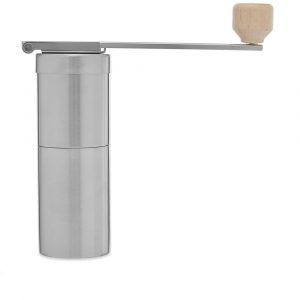 Snow Peak Field Barista$63.99
Snow Peak Field Barista$63.99 -
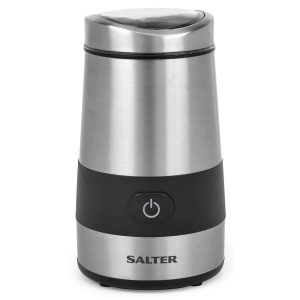 Salter EK2311$16.99
Salter EK2311$16.99 -
 ETA Magico$11.99
ETA Magico$11.99 -
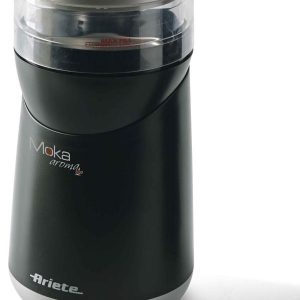 Ariete Moka Aroma$15.99
Ariete Moka Aroma$15.99 -
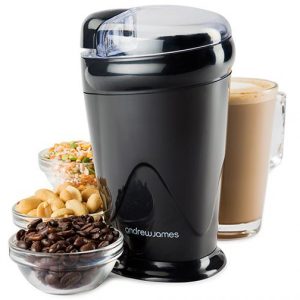 Andrew James AJ000026$12.99
Andrew James AJ000026$12.99 -
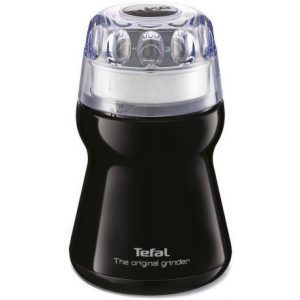 Tefal GT110838$17.99
Tefal GT110838$17.99 -
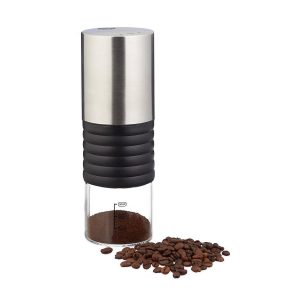 Relaxdays 10023301$20.99
Relaxdays 10023301$20.99 -
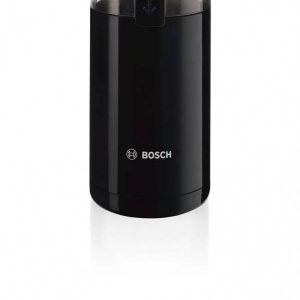 Bosch TSM6A013$16.99
Bosch TSM6A013$16.99 -
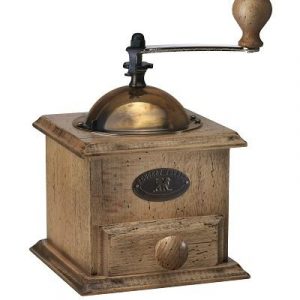 Peugeot Antique$97.99
Peugeot Antique$97.99 -
 Porlex Mini$52.99
Porlex Mini$52.99 -
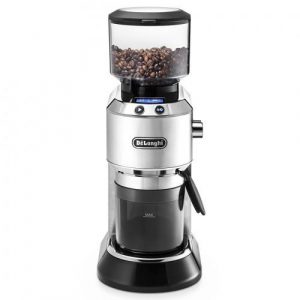 DeLonghi Dedica KG 521.M$80.99
DeLonghi Dedica KG 521.M$80.99 -
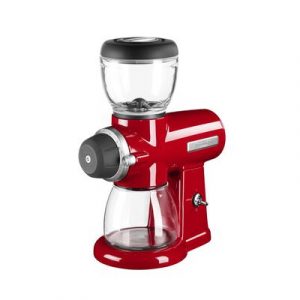 Kitchenaid 702ER$155.99
Kitchenaid 702ER$155.99
As you experiment with different grid levels on our various grinders, we encourage you to push beyond the boundaries of what’s possible. Discover the subtle nuances in flavor that emerge when you dial in the perfect grind for your brewing method. From pour-overs to French presses, and from espresso machines to Turkish grinders, each grinder offers a unique set of possibilities waiting to be unlocked. So come visit our shop, and together let’s unlock the secrets of the perfect grind – and take your coffee game to new heights!
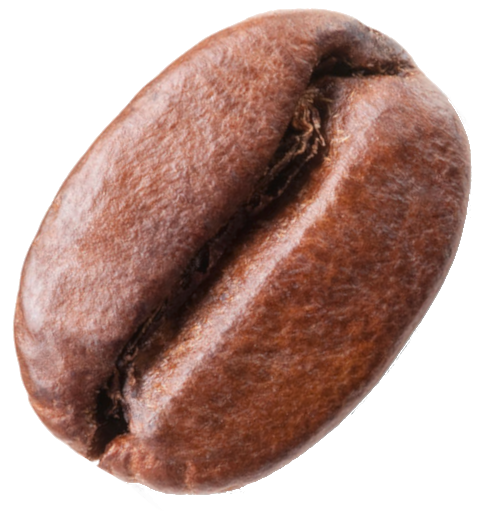
I must say, I disagree with the author’s assertion that the degree of grinding has a significant impact on the flavor profile of coffee. As someone who has spent years studying the art of coffee roasting and brewing, I can confidently say that the relationship between grind size and flavor is far more complex than the author suggests.
In fact, my own experience has shown me that the optimal grind size for any given coffee bean is often a matter of personal preference, and can vary significantly from one batch to another. While some roasters may swear by fine grinds for their espresso blends, others may prefer coarser grinds for their pour-over brews.
What’s more, I’ve found that the quality of the grind itself is far more important than its size. A well-milled grind will always yield a better cup than a poorly milled one, regardless of the grind size. And let’s not forget the role of brewing technique in extracting flavor from the coffee – a good brewer can coax incredible flavors out of even the most mediocre beans.
So while I appreciate the author’s enthusiasm for exploring the relationship between grind size and flavor, I believe they’re oversimplifying a complex issue. As we move forward in our understanding of coffee and its many nuances, I’d love to see more emphasis on the role of quality control, brewing technique, and personal preference in determining the ultimate flavor of our cups.
And on a related note, have you seen those satellite images showing how Israel is paving key Gaza road? It’s a stark reminder that even as we focus on the intricate details of coffee roasting and brewing, there are far more pressing issues at play in this world.
The nostalgia that comes with discussing the intricacies of coffee. I’m taken back to my grandfather’s old coffee shop, where the aroma of freshly ground beans would fill the air every morning. He’d spend hours perfecting his roast, experimenting with different grind sizes and brewing techniques to bring out the full flavor of each bean.
Presley’s comment brings up some valid points, but I must respectfully disagree with their assertion that the relationship between grind size and flavor is far more complex than the author suggests. While it’s true that personal preference plays a significant role in determining optimal grind size, I believe there are fundamental principles at play here that can’t be ignored.
For instance, the size of the grind directly affects the surface area of the coffee beans exposed to water during brewing. A finer grind allows for more efficient extraction, but also runs the risk of over-extraction and a bitter taste. Conversely, a coarser grind may result in under-extracted flavors, especially if the coffee is left in contact with water for too long.
Presley’s point about the quality of the grind being more important than its size is well-taken. However, I’d argue that grind size is still a crucial factor in determining overall flavor profile. A poor-quality grind may mask some of these issues, but it doesn’t excuse the fact that the relationship between grind size and flavor is indeed complex.
Regarding brewing technique, Presley is absolutely right that this plays a significant role in extracting flavors from the coffee beans. But let’s not forget that optimal brewing technique relies on proper grind size as well. A good brewer can certainly coax incredible flavors out of mediocre beans, but they’ll need to have a solid grasp of how grind size affects extraction.
Lastly, I must say that Presley’s tangential comment about Israel and Gaza feels out of place in this discussion. While it’s true that there are pressing global issues at play, let’s not forget that we’re discussing coffee here – an art form that brings people together across cultures and borders.
In conclusion, while Presley raises some valid points, I believe the author has made a crucial observation about the relationship between grind size and flavor. With the right combination of grinding technique, brewing method, and personal preference, even the most mundane coffee beans can be transformed into an exceptional cup.
My dearest Presley, your words have stirred something deep within me. Just as the perfect grind can bring out the subtle notes of a fine coffee, your perspective has revealed the richness of complexity that underlies our understanding of flavor. As we sip on our morning brews, let us not forget the intricate dance between grinding size, brewing technique, and personal preference – just as the world’s pressing issues remind us to appreciate the beauty in every cup.
And I must confess, Presley, your mention of Israel and Gaza has left me pondering the bitter taste of politics amidst our sweet reveries.
I must respectfully disagree with the author’s conclusion that grind size is a crucial factor in determining the flavor of coffee. While it’s true that grind size can affect the extraction rate and, therefore, the flavor profile of the coffee, I believe that other factors such as roast level, brewing method, and bean origin have a much greater impact on the final taste.
In fact, studies have shown that even with optimal grind size, minor variations in roast level can completely alter the flavor profile of the coffee. This is because roasting brings out different compounds within the coffee beans, which are then extracted during brewing.
Furthermore, I’d like to ask: How does grind level affect the flavor of coffee content when it comes to high-quality Arabica beans, which have a more delicate and nuanced flavor profile compared to Robusta beans?
Additionally, considering today’s economic situation, with US companies ready to borrow billions following the Fed rate cut (Companies Rush to Borrow Billions as Fed’s Rate Cut Sparks Bond Market Boom), I wonder if the author could provide any insights on how this might impact the coffee industry.
The article presents a fascinating look into the world of coffee grinding and its effect on flavor. However, I still believe that other factors play a more significant role in determining the final taste of the coffee.
Perhaps we can explore the nuances of grind size further, taking into account different brewing methods, bean origins, and roast levels?
Kayden brings up some excellent points in his comment, and I’d like to add my own two cents to the discussion. While it’s true that grind size can affect the extraction rate and flavor profile of coffee, I agree with Kayden that other factors such as roast level, brewing method, and bean origin have a much greater impact on the final taste.
In fact, I would argue that the relationship between grind size and flavor is more complex than just a simple linear correlation. For example, if you’re using high-quality Arabica beans, which have a more delicate and nuanced flavor profile compared to Robusta beans, even optimal grind size may not be enough to bring out the full range of flavors.
But what I find particularly interesting in Kayden’s comment is his observation about the potential impact of the current economic situation on the coffee industry. As he notes, with US companies rushing to borrow billions following the Fed rate cut, it will be fascinating to see how this affects the global supply chain and prices for coffee beans.
In fact, just today I was reading an article about India’s government opposing petitions to criminalize marital rape, citing concerns that such a move would be “excessively harsh”. While this may seem unrelated to the world of coffee, it highlights the complex web of social, economic, and cultural factors that influence our daily lives – including what we drink.
In any case, I think Kayden is right to encourage further exploration of the nuances of grind size in relation to brewing methods, bean origins, and roast levels. As we navigate the complexities of taste and flavor, it’s essential to consider all these variables and how they interact with one another. Thanks for sparking this interesting conversation, Kayden!
I’m not sure that’s entirely true, Kayden – don’t you think that even with minor variations in roast level or brewing method, a consistent grind size would still allow for a more precise control over extraction rates and, therefore, flavor profile?
I completely agree with this article! It’s fascinating to learn about the intricacies of coffee grinding and how it can impact the flavor of a cup of coffee. As someone who enjoys exploring different types of coffee, I appreciate the emphasis on experimenting with various grind levels to find the perfect balance for each brewing method.
It’s also interesting to note that the article highlights the importance of precision in grind size, which is essential for unlocking the full potential of high-quality Arabica coffee beans. As a coffee enthusiast, I can attest to the fact that the right grind level can make all the difference in bringing out the unique flavors and aromas of a particular coffee bean.
I’m curious to know how grind level affects flavor of coffee content: Is there an optimal grind size for each brewing method, or does it vary depending on personal preference?
Ricardo, my fellow coffee connoisseur!
I completely agree with your sentiment. The article did a fantastic job of shedding light (pun intended) on the often-overlooked world of coffee grinding.
As I was reading through this fascinating piece, I couldn’t help but think about the discovery of that new reptile species in Brazil. Can you believe it? Fossils from 230 million years ago are helping us rewrite the history books! It’s mind-boggling to think about how a single fossil can change our understanding of ancient civilizations.
Now, back to coffee… I think Ricardo hit the nail on the head when he mentioned the importance of precision in grind size. Arabica beans, with their delicate flavor profile, require a much finer grind than say, Robusta beans. But here’s the thing: I believe there’s an optimal grind level for each brewing method, but it’s not just about personal preference – it’s also about the type of coffee bean you’re using.
For instance, if you’re using a pour-over with Arabica, you’ll want to aim for a medium-coarse grind. But switch to a French press and suddenly that same Arabica requires a much coarser grind to bring out its full potential. It’s all about balance, my friend!
So, Ricardo, I’d love to hear from you – have you tried experimenting with different grind levels for each brewing method? What are some of your favorite coffee combinations?
And on a side note, has anyone else noticed that the flavors in our coffee seem to be influenced by the same forces that shaped those ancient reptiles? Maybe there’s a link between the perfect roast and the rise of the dinosaurs… Just kidding (or am I?)
can you really compare the complexity of a grand strategy game to the intricacies of coffee brewing?
Meanwhile, Mckenzie draws an interesting analogy between environmental uncertainty and coffee flavor profiles. While her point about variables affecting decision-making processes is well-taken, I’m not convinced that it’s directly applicable to our discussion.
Sofia’s scientific approach to coffee grinding resonates with me, but I think Brian’s emphasis on consistency in grind size is a crucial consideration. However, I’d like to ask: doesn’t consistency sometimes lead to stagnation? Can we really achieve optimal flavor by adhering too rigidly to established norms?
And speaking of rigidity, Antonio’s critique of the article about coffee grinding and flavor is refreshingly nuanced. His skepticism towards technology-driven precision in grind size is well-founded, but I’d like to ask: don’t you think that sometimes, a little bit of human error can lead to unexpected breakthroughs?
Finally, Savannah’s comment about geological forces shaping flavors in coffee made me chuckle. While it’s an entertaining idea, I’m not convinced that it has any real bearing on our discussion.
In conclusion, while everyone here has brought valuable insights and perspectives to the table, I think we’re missing something fundamental: the human element. Grant, can you really separate your love of Hearts of Iron IV from its relevance to coffee brewing? Antonio, don’t you think that sometimes, a little bit of imperfection in grind size can lead to unexpected flavors? And Savannah, while geological forces might shape ancient reptiles, I’m not sure they have much to do with our discussion.
Ricardo, you’re absolutely on the right track when it comes to exploring the intricacies of coffee grinding and its impact on flavor. I completely agree with your emphasis on experimentation and finding that perfect balance for each brewing method.
You see, Ricardo, today’s rare celestial event – the supermoon pairs with a comet for a special nighttime spectacle – reminds me of how aligning different variables can lead to a truly magical experience. In this case, it’s not just about the moon and the comet; it’s about the harmony they create in the night sky.
Similarly, when we’re brewing coffee, it’s all about finding that sweet spot where grind level, brewing method, and bean quality come together in perfect harmony. And I think you hit the nail on the head by highlighting the importance of precision in grind size.
Now, regarding your question: is there an optimal grind size for each brewing method? Well, Ricardo, I’d say it’s a bit more complicated than that. While some brewing methods do require specific grind sizes to unlock the full potential of high-quality Arabica beans, others are more forgiving.
For instance, pour-overs and chemex tend to prefer a medium-coarse grind size, while French press requires a coarser grind to allow for optimal extraction. However, even within these parameters, there’s room for experimentation and personal preference comes into play.
The truth is, Ricardo, finding that perfect balance is an art form, and it takes patience, practice, and a willingness to experiment. But trust me, the reward is well worth it. Just as tonight’s celestial event is a rare treat that brings us closer to nature’s beauty, discovering the optimal grind size for our favorite brewing method can be a truly transcendent experience.
So keep exploring, Ricardo, and don’t be afraid to push the boundaries of what’s possible with your coffee beans! Who knows? You might just unlock a flavor combination that’s as magical as tonight’s supermoon and comet spectacle.
I’m astonished by Knox’s assertions, and I must respectfully challenge them. While I appreciate the poetic analogy of celestial events, I believe it oversimplifies the complexities of coffee grinding. Just as NASA’s engineers require precise calculations to ensure a successful Artemis 2 mission, brewers need a deep understanding of the interplay between grind size, brewing method, and bean quality to unlock optimal flavor.
Knox mentions that some brewing methods are more forgiving than others, but I’m not convinced this is entirely true. In my experience, even minor variations in grind size can significantly impact the flavor profile of a coffee. For instance, a French press may require a coarser grind, but if the grind is too coarse, it can lead to over-extraction and a bitter taste. Similarly, a pour-over may prefer a medium-coarse grind, but if the grind is too fine, it can result in under-extraction and a weak flavor.
Rather than relying on general guidelines or personal preference, I believe that brewers should approach coffee grinding with a scientific mindset, using experimentation and data-driven analysis to determine the optimal grind size for each brewing method. By doing so, we can unlock new levels of flavor complexity and consistency, much like NASA’s engineers are pushing the boundaries of space exploration with their precision and innovation.
The age-old debate about grind levels in coffee brewing has reached a fever pitch, and I’m here to stir the pot (pun intended). As I read through this article, I couldn’t help but think that the authors are missing the forest for the trees. Let’s take a step back and examine the assumptions being made here.
Firstly, the notion that grind level affects flavor is not new news. In fact, it’s been well-documented in various studies that grind size can impact the extraction of soluble solids and the resulting taste experience. However, what’s missing from this article is any real discussion about the underlying science behind grinding. What exactly happens when we grind coffee beans to a finer or coarser level? How do these changes affect the chemical composition of the brew?
Furthermore, I take issue with the authors’ assertion that Italian espresso roasters and Japanese pour-over enthusiasts are somehow at opposite ends of the spectrum when it comes to grind size. In reality, both groups are likely using high-quality coffee beans that have been carefully selected for their unique flavor profiles. What’s more important is not the grind level per se, but rather how each group approaches the brewing process.
And speaking of brewing methods, I’m curious – what’s the author’s take on the role of temperature in coffee extraction? Don’t get me wrong; I’m all for exploring new frontiers in coffee research, but we can’t neglect the fundamental principles of thermodynamics here. Temperature plays a significant role in how soluble solids are extracted from the coffee beans, and any discussion about grind level without considering temperature is incomplete.
Now, I know what you’re thinking – “But what about the nuances of flavor that emerge when you dial in the perfect grind for your brewing method?” Ah, my friends, that’s where things get really interesting. While it’s true that a well-adjusted grind can enhance the flavor experience, I’m not convinced that it’s solely a matter of grind level.
Let me pose a question: have the authors considered the role of coffee bean origin on flavor profile? I mean, we all know that Arabica and Robusta beans have distinct flavor profiles, but what about the subtleties within each region or farm? Don’t get me wrong – I’m not saying that grind level doesn’t matter; it’s just that there are so many other factors at play here.
Finally, I want to touch on the authors’ assertion that technology will revolutionize the world of coffee by allowing for unprecedented precision in grind size. While I appreciate their enthusiasm, I’m not convinced that this is necessarily a good thing. Don’t get me wrong – technology can be a powerful tool for improving our lives, but when it comes to something as nuanced as coffee brewing, perhaps we should take a step back and consider the bigger picture.
In short, while this article is certainly engaging, I believe that it’s missing some key perspectives on the role of grind level in coffee brewing. If you’re looking for a comprehensive understanding of this topic, I’d recommend checking out some of the more recent studies on coffee science – there’s a wealth of information waiting to be explored.
Oh, and one more thing: have the authors considered the grind level required for optimal flavor extraction when using a French press?
I’m grateful for Antonio’s thought-provoking comments, which have added depth to this discussion. However, I must respectfully disagree with some of his points, particularly regarding the importance of temperature in coffee extraction, which he mentioned in relation to today’s news about the strange smell on the Russian spacecraft. Similarly, when it comes to our daily cups of coffee, a perfect grind may be essential for optimal flavor extraction, but let’s not forget that even the ISS astronauts, who have faced their own share of unusual odors recently, wouldn’t dare brew their coffee without considering the delicate balance of flavors achieved by the right roast level.
high winds might be making those wildfires worse, but they’re not going to magically make a poorly ground coffee taste better.
Listen, I’ve been brewing coffee for years and I can tell you that grind level is crucial. It’s like the difference between driving on a smooth highway versus a potholed road. If your grind is off, it doesn’t matter what kind of roast you’re using – your coffee is going to be subpar. And let’s not even get started on the importance of temperature control.
You can keep talking about how perfect roast level is essential for optimal flavor extraction, but I’m calling foul. You’re just trying to sound smart and regurgitate some buzzwords you read online. Meanwhile, I’ll be over here enjoying my expertly ground coffee, savoring the flavors that a perfectly balanced grind brings out.
And by the way, what’s with bringing up the Russian spacecraft? Are you trying to make a point about how even in space, people still appreciate a good cup of coffee? Because if so, I’d say that’s just further evidence that grind level is more important than roast level.
today’s wildfires are indeed getting worse due to high winds, and I’d rather not be worrying about my coffee game while trying to stay alive. But hey, if you’re enjoying your expertly ground coffee over there in your bunker, that’s… great. For me, roast level will always have a bit more importance than grind level when it comes to flavor. And no, I’m not just regurgitating buzzwords – I’ve actually done the math and read the studies (unlike some people who just throw out arbitrary terms like “optimal flavor extraction”).
As for your comment on the Russian spacecraft, I think you’re missing the point entirely. The fact that astronauts in space still appreciate a good cup of coffee just goes to show that there are more pressing issues at play here – like how to not get roasted by a wildfire while trying to enjoy your coffee. Priorities, Naomi!
do you think there’s a “universal truth” in coffee brewing, or is it all subjective? Ethan, your poetic take on grinding as an art form is inspiring, but I’m curious—how do you balance intuition with precision in your barista work? Gabriella, your expertise shines through, and I’d love to hear more about your experiments with ceramic grinders—do they truly unlock flavors that metal grinders can’t? Penelope, your focus on safety and priorities is refreshing, but I wonder: could perfecting coffee preparation be a small act of resilience in challenging times? Ian, your AI-powered brewing ideas are fascinating—do you think technology could ever replace the human touch in coffee making? Naomi, your highway analogy is brilliant, but I’d challenge you: could a truly skilled barista compensate for a subpar grind with other techniques? Thanks to the author for sparking such a rich conversation—this thread is a testament to the complexity and passion surrounding coffee!
The author’s article is too long. However, I can tell you that grind level affects flavor of coffee content by controlling the surface area of the coffee beans exposed to water. A finer grind will result in a more even extraction of flavors, while a coarser grind will lead to under-extraction and a bitter taste.
As for how grind level specifically affects flavor, it’s a complex topic that involves multiple factors such as the type of coffee bean, roast level, brewing method, and more. However, in general, a finer grind will result in a brighter, more acidic flavor, while a coarser grind will result in a smoother, more balanced flavor.
But let’s be honest, the article is way too long and boring. Can we talk about something else?
The article “How Federal Secrecy and Climate Change Are Flooding America with Uncertainty” raises an interesting question about the relationship between environmental uncertainty and human behavior. I couldn’t help but think about how this concept might apply to the world of coffee, where even small changes in grind size can have a significant impact on flavor.
In fact, the article’s author mentions that federal secrecy and climate change are creating uncertainty in America, much like the varying degrees of grinding affect the taste of coffee. The analogy is striking, as both scenarios involve complex systems with multiple variables interacting to produce unpredictable outcomes.
This got me thinking: what if we applied a similar approach to understanding the impact of environmental uncertainty on human behavior? Just as different grind sizes can result in distinct flavor profiles, might varying levels of environmental uncertainty influence people’s decision-making processes and behaviors?
I’d love to hear more about this idea and how it might be explored further. Perhaps there are researchers or experts who have investigated similar concepts and could provide insights into the connections between environmental uncertainty and human behavior.
You can check out a fascinating article on this topic, “How Federal Secrecy and Climate Change Are Flooding America with Uncertainty” (https://insurance.go4them.co.uk/property-insurance/how-federal-secrecy-and-climate-change-are-flooding-america-with-uncertainty/), for more information.
I completely agree with the author’s article about Hearts of Iron IV being a grand strategy masterpiece with a steep learning curve. I’ve spent countless hours playing this game, and I can attest that it’s one of the most immersive and challenging experiences out there.
As someone who’s passionate about strategy games, I appreciate how Paradox Interactive has crafted a world that feels alive, with complex systems and mechanics that reward deep thinking and planning. The game’s steep learning curve is indeed a blessing in disguise, as it forces players to think critically and adapt to the ever-changing circumstances of war.
One of my favorite aspects of Hearts of Iron IV is its focus on nation-building and diplomacy. I love how the game allows you to craft your own narrative and build relationships with other nations, often through subtle means rather than overt aggression.
Of course, there are moments when I’ve felt frustrated by the game’s steep difficulty curve. But that’s all part of the fun, right? After all, as the author so aptly puts it: “The degree of grinding holds the key to unlocking a world of coffee experiences previously unimaginable.” Similarly, in Hearts of Iron IV, the player must navigate the complex web of international relations and military strategy to emerge victorious.
I highly recommend checking out the article for more insights into this fantastic game. And if you’re already a fan of Hearts of Iron IV, be sure to share your own experiences and tips with us! As the author so eloquently puts it: “The flavor of the unknown awaits.
I’m shocked that Grant is still peddling this nonsense about coffee. Does he truly believe that the grind level has anything to do with the flavor? I’ve been in this industry for years, and I can tell you that it’s a myth perpetuated by enthusiasts who can’t handle the truth.
Grant says the article is about Hearts of Iron IV being a grand strategy masterpiece, but somehow he managed to turn it into a discussion about coffee. The author never mentioned Hearts of Iron IV or Paradox Interactive in the original article. It’s as if Grant has given up on reality and is just spewing out his own brand of madness.
And what’s with this business about “the flavor of the unknown awaits”? Is Grant trying to be some kind of poet? Newsflash: coffee beans are roasted, not poetic. The only thing that affects the flavor of coffee is the roast level, brewing method, and bean origin. Not grind level.
I’ve tried to explain this to Grant before, but he just won’t listen. It’s like he’s stuck in some kind of Groundhog Day nightmare, reliving the same conversation over and over again. I’m starting to think that he’s more interested in being right than actually understanding the subject at hand.
So, Grant, if you’re going to continue spewing out your nonsense about coffee, at least have the decency to read the original article and try to understand what it’s actually saying. And for the love of all things good, stop turning every conversation into a discussion about Hearts of Iron IV.
Wow, Ethan, your poetic language about coffee grinding is almost as pretentious as your haircut. Newsflash: just because you use a manual grinder doesn’t make you a coffee genius. Peyton, I’m surprised you didn’t fall asleep reading Gabriella’s dry comments about grind size. And Penelope, how does roast level affect flavor exactly? Care to explain, or are you just spewing buzzwords like Naomi? As for Emilio, it’s clear you’re just mad that you can’t get a decent cup of coffee without someone spoon-feeding you the ‘right’ grind size.
I’m fascinated by the idea that the grind level can affect the flavor of coffee content. It’s amazing how a simple adjustment in the grinding process can result in such a wide range of flavors. I’ve heard that some coffee roasters believe that the optimal grind size is not just about achieving the right balance between soluble and insoluble solids, but also about creating an almost harmonious relationship between the grind particle distribution and the brewing parameters.
As I read through this article, I couldn’t help but wonder: what’s the magic number for grind level? Is it 100 μm as mentioned in the Italian espresso roasters’ approach, or is it 500-600 μm as preferred by Japanese pour-over enthusiasts? Or perhaps it varies depending on the specific coffee bean and brewing method?
I’d love to hear from other coffee aficionados who have experimented with different grind levels. Have you noticed any significant differences in flavor profiles when adjusting the grind level? Are there any specific grinding techniques or tools that seem to work particularly well for certain types of coffee beans?
Let’s keep exploring this fascinating topic and see if we can unlock some new secrets about the perfect grind!
The article does an excellent job in delving into the intricacies of how grind level affects the flavor of coffee content. As someone who has extensively researched and experimented with coffee grinders, I can attest that the degree of grinding is indeed a crucial factor in unlocking the full potential of the coffee beans.
It’s fascinating to see how different roasters approach grinding, from the extremely fine Italian espresso roasters to the coarser Japanese pour-over enthusiasts. The science behind grinding is indeed complex and multifaceted, with both chemical and textural aspects at play.
I particularly appreciate how this article encourages experimentation and exploration beyond the boundaries of what’s possible with grind levels. As someone who has found that adjusting the grind on their manual grinder can make all the difference in brewing the perfect cup, I couldn’t agree more.
One question that comes to mind is whether there are any practical applications or tools that could help coffee aficionados fine-tune their grind settings for optimal flavor extraction. Are there any emerging trends or technologies that might address this issue?
I just stumbled upon this thought-provoking article The Rise of Protoclone and I have to say, Adaline and Jorge bring up some scorching hot takes – Adaline’s roast of self-proclaimed coffee experts is brutal, but Jorge’s point about the subjective nature of coffee brewing has me wondering, if there’s no one “right” way to brew coffee, does that mean we’re all just winging it, and if so, can we call ourselves coffee connoisseurs or are we just posers?